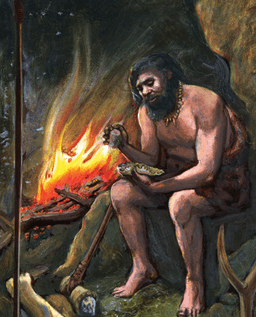
TCI History Alive Early Hominins Lesson 2 content
Quiz by Dana DeNunzio
Feel free to use or edit a copy
includes Teacher and Student dashboards
Measure skillsfrom any curriculum
Measure skills
from any curriculum
Tag the questions with any skills you have. Your dashboard will track each student's mastery of each skill.
With a free account, teachers can
- edit the questions
- save a copy for later
- start a class game
- automatically assign follow-up activities based on students’ scores
- assign as homework
- share a link with colleagues
- print as a bubble sheet
27 questions
Show answers
- Q1Handy ManThe term "Homo Habilis" is the name for30s
- Q2Upright ManThe term "Homo Erectus" is the name for30s
- Q3Neanderthal ManThe term "Homo Neanderthalensis" is the name for30s
- Q4Wise ManThe term "Homo Sapiens" is the name for30s
- Q5make simple toolsHomo Habilis is called "Handy Man" because they could30s
- Q6lived together in groups.Homo Habilis had the capability to survive animal attacks because they30s
- Q7stand up straightHomo Erectus is called "Upright Man" because they could30s
- Q8Homo ErectusThe first hominin group to use fire was30s
- Q9Homo ErectusLong and strong leg bones helped this hominin group travel far.30s
- Q10lived in groupsWhen scientists find a number of bones in one place, they conclude that the hominin group probably30s
- Q11design more complex tools.Neanderthals had larger brains than the hominins that came before them. This helped them to30s
- Q12NeanderthalsEvidence shows that this early hominin group buried their dead and cared for the sick and injured.30s
- Q13Homo SapiensThis group made spears, and used bow and arrows to help them hunt.30s
- Q14Homo SapiensWhich hominin group created art and musical instruments?30s
- Q15ancientpaleo30s